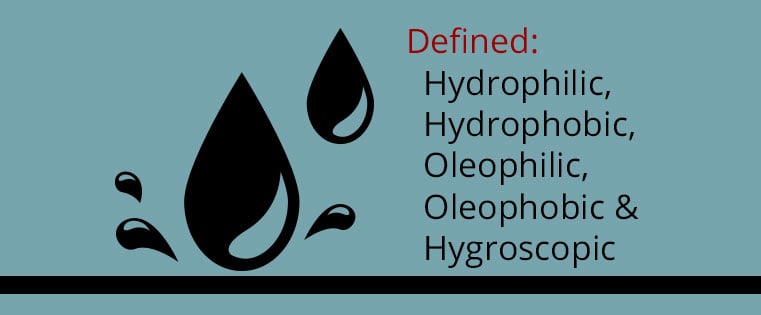1 min read

To save time and postage, please sign up for customer paperless invoicing, payments, and vendor payments.
Customers click here
Vendors click here
To request compliance documentation click here.
1 min read
![]() Frank Hild
February 27, 2019
Frank Hild
February 27, 2019

When discussing enhanced materials we often use terms like “hydrophilic/hydrophobic” and “oleophilic/oleophobic.” Just what do these terms mean exactly? Let’s take a quick look.
Water is itself hydrophilic (it mixes with more water easily) and oils or fats are generally hydrophobic and will separate from water, forming an oily layer.
Note: The suffix "philic" means loving or attracted to. The suffix "phobic" means fear or fearful.
There’s a lot more to learn, but this is certainly a useful place to start. If we can help you sort these terms out or provide information on how to modify materials to enhance (or suppress) any these characteristics, please do not hesitate to reach out to our experts.